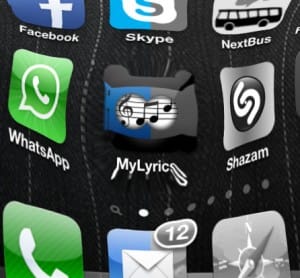Apple App Store changed the business world forever
In raw numbers, the Apple App Store's reach is undeniable, with more than 50 billion downloads and about 900,000 apps in total. Though the stats are impressive, what matters more is the transformative influence the App Store has had in the business world, affecting everything from the logic of pricing to startup culture itself.
 Even as Apple got people used to the idea of having a supercomputer in their pocket, it significantly changed how businesses interact with consumers around the world, says Brian Blau, research director for consumer technology and markets at research firm Gartner. Thanks to Apple's innovation, the way we think about product sales and delivery, about marketing and customer loyalty, and about what a hot new startup looks like will never be the same.
Even as Apple got people used to the idea of having a supercomputer in their pocket, it significantly changed how businesses interact with consumers around the world, says Brian Blau, research director for consumer technology and markets at research firm Gartner. Thanks to Apple's innovation, the way we think about product sales and delivery, about marketing and customer loyalty, and about what a hot new startup looks like will never be the same.
The advantage of such pricing, says Mulpuru, is that "it's a micropayment, it's something you almost don't even think about." But, she adds, it may be a strategy best suited to large companies doing a high volume of sales: "You have to sell a hell of a lot of whatever it is you're selling to make any decent money." Nevertheless, by reducing payment friction -- the consumer's resistance to parting with hard-earned cash -- Apple changed the game.
Similarly, print media brands such as Wired magazine have developed apps to deliver custom content to their readers. And traditional magazines are now forced to compete with free apps such as Flipboard and Feedly, which mimic the experience of reading a magazine while also pulling in content from social media, blogs and other sources.
The expectation now is that delivery of goods, whenever possible, should be instant and accessible from anywhere, Blau says. We have the App Store largely to thank for that.
Pricey apps do exist, such as PV Master, a professional solar and photovoltaic tool that sells for $11.99 on iPhone and iPad. But these are mostly niche apps with a user base that is willing to spend the money, Blau says. The freemium model reigns supreme. It's also known as the "razorblade model" after the way men's razors are sold cheaply, with replacement razors being expensive, but it was Apple that provided a platform on which this business model could flourish widely.
"People will tell me an app's name and I still can't find it in many cases," Mulpuru says. But while it can be hard to attract new users, apps are great customer loyalty tools. Mulpuru offers Pinterest and Houzz, an app for interior design and decorating ideas, as examples of how frequently updated content encourages users to check back regularly, making the app part of their daily life.
"They have so much content, but they just move it around, and given that any session I have with them is maybe five minutes, they just need to move around the good content and that's how I get exposed to more," Mulpuru says. In this way, the company gets to drive engagement without spending too much time developing new content.
But a phenomenon like Instagram is rare. Where Mulpuru sees the most opportunity is in the realm of "micropreneurs" -- people with development skills, she says, "who can build a little something on the side and potentially make a nice side income from it."
Coders who have no desire to launch their own app have benefited too, as the App Store has driven demand for programming talent at companies in a wide range of industries. Says Mulpuru, "I think every parent should look at the App Store and think, 'This is the future of wealth creation,' and recognize how important programming is for a core curriculum at a very young age."
via Entrepreneur
 Even as Apple got people used to the idea of having a supercomputer in their pocket, it significantly changed how businesses interact with consumers around the world, says Brian Blau, research director for consumer technology and markets at research firm Gartner. Thanks to Apple's innovation, the way we think about product sales and delivery, about marketing and customer loyalty, and about what a hot new startup looks like will never be the same.
Even as Apple got people used to the idea of having a supercomputer in their pocket, it significantly changed how businesses interact with consumers around the world, says Brian Blau, research director for consumer technology and markets at research firm Gartner. Thanks to Apple's innovation, the way we think about product sales and delivery, about marketing and customer loyalty, and about what a hot new startup looks like will never be the same.
Pricing
The sweet spot for app pricing, when the app isn't free, is usually $0.99. This "has been a magic number for lots of businesses," says Sucharita Mulpuru, an analyst at research firm Forrester, noting that it was Apple's price for iTunes song downloads even before the App Store launched. Another tech titan that has borrowed this pricing logic is Amazon, which offers many 99-cent ebooks for its Kindle reader.The advantage of such pricing, says Mulpuru, is that "it's a micropayment, it's something you almost don't even think about." But, she adds, it may be a strategy best suited to large companies doing a high volume of sales: "You have to sell a hell of a lot of whatever it is you're selling to make any decent money." Nevertheless, by reducing payment friction -- the consumer's resistance to parting with hard-earned cash -- Apple changed the game.
Product delivery
In changing the way digital goods are acquired, the App Store also spurred product companies to reinvent themselves in creating offerings for the digital space. "Amazon was king of delivering physical books to your house," says Blau. "Now you can get ebooks."Similarly, print media brands such as Wired magazine have developed apps to deliver custom content to their readers. And traditional magazines are now forced to compete with free apps such as Flipboard and Feedly, which mimic the experience of reading a magazine while also pulling in content from social media, blogs and other sources.
The expectation now is that delivery of goods, whenever possible, should be instant and accessible from anywhere, Blau says. We have the App Store largely to thank for that.
Selling
With a supermajority of iOS apps being offered for free -- more than 90 percent, Blau says – companies have turned en masse to a business model in which customers pay for extra features. In this freemium model, "you hook the user with some amount of free content, [and] if they like it, that's where the hook gets embedded and they're going to pony up a dollar," says Blau. In Hipstamatic, a photo-taking app, users might pay for special lenses and filters; in a mobile game, transactions might unlock extra levels or weapons.
Pricey apps do exist, such as PV Master, a professional solar and photovoltaic tool that sells for $11.99 on iPhone and iPad. But these are mostly niche apps with a user base that is willing to spend the money, Blau says. The freemium model reigns supreme. It's also known as the "razorblade model" after the way men's razors are sold cheaply, with replacement razors being expensive, but it was Apple that provided a platform on which this business model could flourish widely.
Marketing
When it comes to your marketing initiatives, the App Store has been a double-edged sword. While it created a new platform for advertising, it also created a new problem for brands, namely how to appear at or near the top of search results in Apple's store, Blau says. The dynamic is similar to that of Google keyword searches -- if you aren't in the top five or 10 results, people will be much less likely to find you."People will tell me an app's name and I still can't find it in many cases," Mulpuru says. But while it can be hard to attract new users, apps are great customer loyalty tools. Mulpuru offers Pinterest and Houzz, an app for interior design and decorating ideas, as examples of how frequently updated content encourages users to check back regularly, making the app part of their daily life.
"They have so much content, but they just move it around, and given that any session I have with them is maybe five minutes, they just need to move around the good content and that's how I get exposed to more," Mulpuru says. In this way, the company gets to drive engagement without spending too much time developing new content.
Startup culture
The App Store also revolutionized startup culture. Suddenly, three students in a dorm room or a couple of recent graduates could code an app and build a company on it, getting venture funding and millions of users along the way. The most spectacular success in this vein was Instagram. Stanford University graduates Kevin Systrom and Mike Krieger's app for sharing photos grew from 80 users to 1 million users within two months of its launch.But a phenomenon like Instagram is rare. Where Mulpuru sees the most opportunity is in the realm of "micropreneurs" -- people with development skills, she says, "who can build a little something on the side and potentially make a nice side income from it."
Coders who have no desire to launch their own app have benefited too, as the App Store has driven demand for programming talent at companies in a wide range of industries. Says Mulpuru, "I think every parent should look at the App Store and think, 'This is the future of wealth creation,' and recognize how important programming is for a core curriculum at a very young age."
via Entrepreneur
Published: Sat, Jul 13 2013 @ 11:36:49
Back to Blog
